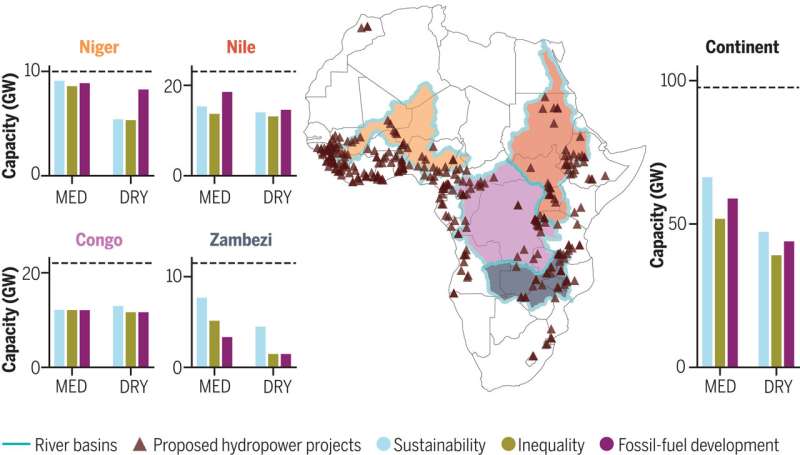
Across the African continent, more than 300 new hydropower projects are planned to meet the growing demand for electricity. Some of these will require big dams, which can have major negative environmental impacts. Another looming problem with hydropower is that the water cycle is affected by climate change. Water availability will be reduced and become more variable in some locations in the next decades.
We are a team of environmental and energy systems researchers. Energy systems is the study of how energy can be produced to meet the demand of the different sectors of society. Environmental systems modeling is used to simulate the natural environment and evaluate the impacts of infrastructure on it.
We analyzed the likely development of energy systems in Africa from 2020 to 2050, looking at energy demand, the changing use of land and its impact on energy and how the warming climate will affect water availability.
The continent of Africa still uses 80% less electricity than the global average per capita. But given the projected population growth and increase in living standards, electricity demand in Africa will rise. This means new power generation infrastructure will be needed.
Our research found that wind and solar projects will be more cost effective than hydropower by 2030. This means that only 40% to 68% of the planned hydropower capacity in Africa will be economically attractive.
What also needs to be considered is that reducing the impact of droughts on energy systems requires overbuilding infrastructure. This means more energy infrastructure than needed on average is required to be reliable against extreme droughts. An overall increased annual investment in new power plants (of any type) of 1.8% to 4% will be needed across the continent.
This additional investment is needed when considering a worst-case scenario for hydropower generation. This scenario also includes the effects of climate change and the reduced cost of renewables on the power system expansion.
Hydropower no longer the solution
Hydropower is currently the main source of renewable electricity on the African continent with around 40GW of capacity installed. This generates around 150 TWh of electricity in a year, 15% of the total electricity consumption in the continent. This is enough to satisfy the annual power consumption of two countries of the size of Morocco and Algeria with a total population of 82.5 million people, for example. It has been considered a cheap source of electricity with a low carbon footprint. But this is no longer strictly true.
Hydropower presents the following problems.
Renewable power sources such as solar and wind power are becoming increasingly cost-competitive. These can reduce hydropower reliance, diversify countries' energy portfolios, and reduce the environmental impact of building more hydropower dams.
African river basins support land and freshwater ecosystems that are global biodiversity hotspots. Of the 543 major rivers in the world—those that are longer than 500km and which flow in an uninterrupted way to the sea—156 (29%) are located in Africa. Dams disturb this by breaking up the flow of rivers.
This article is republished from The Conversation under a Creative Commons license. Read the original article.![]()
Citation: Hydropower damages river systems in Africa: How more solar and wind power can solve this problem (2024, June 6) retrieved 6 June 2024 from https://techxplore.com/news/2024-06-hydropower-river-africa-solar-power.html
This document is subject to copyright. Apart from any fair dealing for the purpose of private study or research, no part may be reproduced without the written permission. The content is provided for information purposes only.
